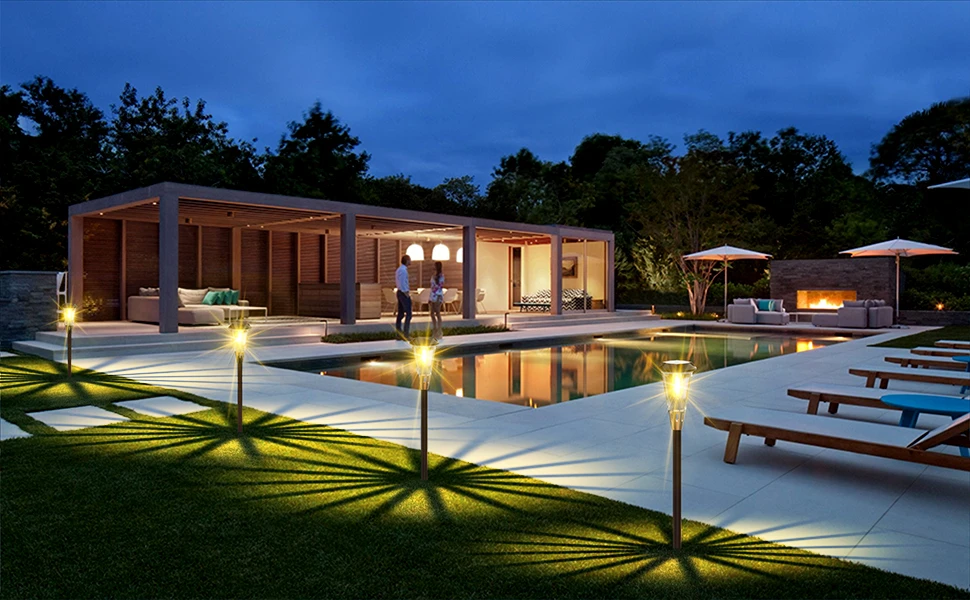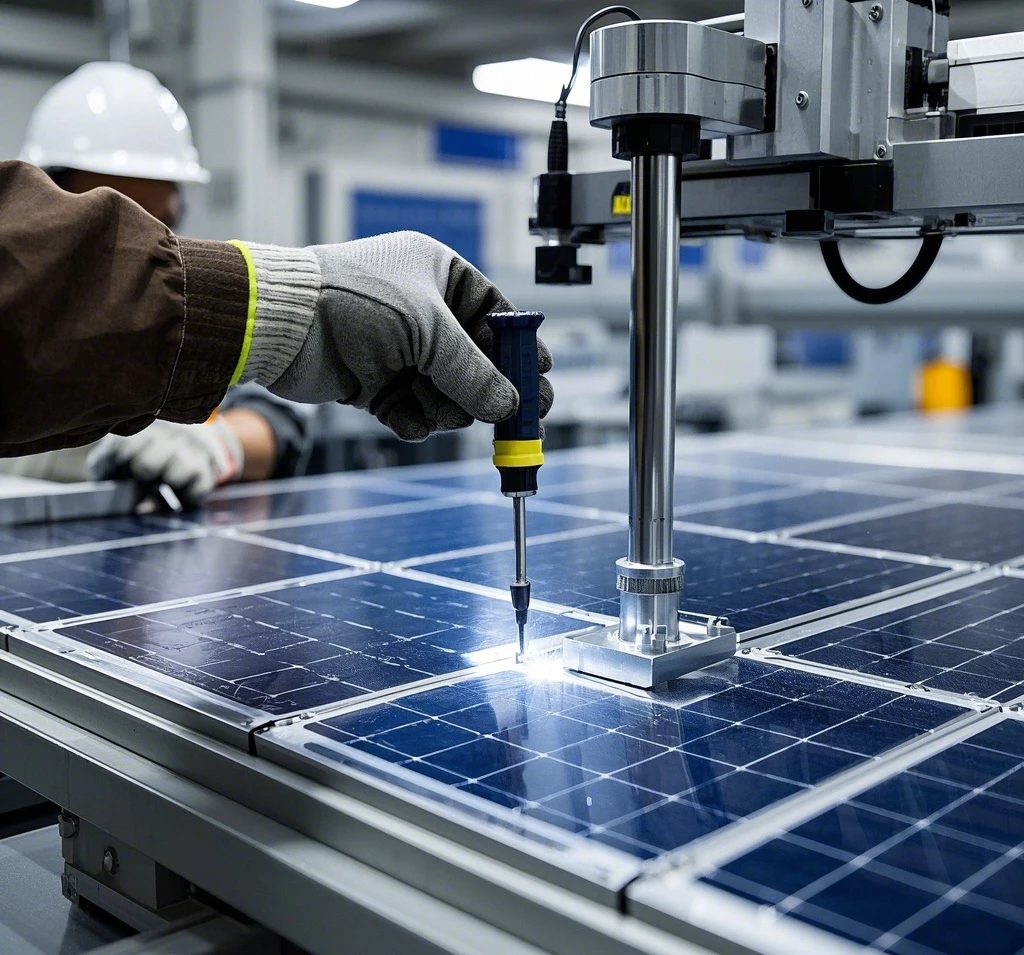Picture a stormy night, with wind howling and rain lashing down, yet your garden pathway remains aglow, guiding you safely home with the steady light of solar pathway lights. These resilient fixtures are more than just decorative; they ensure safety and beauty in your outdoor spaces, no matter the weather. As eco-consciousness grows and solar technology advances, solar pathway lights have become a staple in gardens, parks, and community walkways. However, not all lights are created equal—weather resistance varies widely. This article dives into the key factors that make solar pathway lights durable and weather-resistant, empowering you to choose products that stand up to rain, snow, heat, and wind for years to come.

Key Factors Affecting Weather Resistance
Housing Material Choices
The material of a solar pathway light’s housing is critical to its ability to withstand harsh conditions.
- Stainless Steel: Known for its high strength and corrosion resistance, 304 stainless steel is a top choice for premium lights. It resists rust in humid or coastal environments, ensuring longevity even in salty air. For example, the EcoCity Outdoor Solar Pathway Lights use stainless steel for durable, rust-free performance.
- Aluminum Alloy: Lightweight yet robust, aluminum alloys are treated with anodized coatings to enhance corrosion resistance. These are ideal for withstanding daily sun exposure and rain, as seen in the Frontgate Pro Series VI Path Lights with cast-aluminum housing.
- Plastic:
- Standard Plastic Drawbacks: Basic plastics like polyethylene degrade under UV exposure, becoming brittle or faded within 1-2 years if not treated with anti-aging additives.
- High-Grade Engineering Plastics: ABS plastics, used in products like the BITPOTT Bright Solar Pathway Lights, offer excellent impact resistance, heat tolerance, and stability in temperatures from -20°C to 80°C, making them a cost-effective, durable choice.
Waterproof Design and IP Ratings
Waterproofing is essential for outdoor lights exposed to rain or snow.
- Sealing Mechanisms:
- Silicone Gaskets: Most durable lights, like the Alfiot Solar Pathway Lights, use silicone gaskets at joints (e.g., lamp cover and battery compartment) to create a watertight seal, preventing water ingress and circuit damage.
- Breathable Waterproof Membranes: High-end models incorporate membranes that block water and dust while allowing air pressure equalization, preventing condensation in temperature swings.
- IP Rating Standards:
- The IP (Ingress Protection) rating consists of two digits: the first (0-6) indicates dust protection, and the second (0-8) indicates water resistance.
- IP65: Prevents dust and water jets, suitable for most outdoor settings, as seen in the BEAU JARDIN Solar Pathway Lights.
- IP67: Offers complete dust protection and can withstand submersion in 1 meter of water for 30 minutes, ideal for rainy or coastal areas, as exemplified by the BITPOTT Bright Solar Pathway Lights.
Solar Panel Weather Resistance
The solar panel’s ability to endure weather impacts charging efficiency and longevity.
- Panel Types:
- Monocrystalline Silicon: With 20-25% efficiency, these panels, used in the BITPOTT lights, feature tempered glass covers that resist hail and windblown debris. They maintain stable performance in high temperatures with minimal power loss.
- Polycrystalline Silicon: Offering 15-20% efficiency, these panels perform well in low light and have durable encapsulation, though slightly less resistant to heat than monocrystalline.
- Amorphous Silicon: With 8-12% efficiency, these flexible panels are less durable under prolonged UV exposure, making them less common in high-end pathway lights.
- UV and Self-Cleaning Features:

Battery Adaptability and Protection
Batteries must withstand temperature extremes and moisture.
- Battery Types:
- Lithium-Ion Batteries: Preferred for their high energy density and 2000+ charge cycles, lithium iron phosphate batteries (e.g., in Frontgate lights) perform well in -20°C to 60°C conditions, ideal for cold climates.
- NiMH Batteries: More affordable but less efficient, with 500-1000 cycles and reduced capacity below -10°C, as noted in some Solpex models.
- Protection Measures:
- Sealed Battery Compartments: Rubber gaskets, as in BITPOTT lights, prevent water and dust ingress, protecting against short circuits.
- Temperature Regulation: Some high-end lights use thermal management systems to heat batteries in cold weather or dissipate heat in hot conditions, ensuring optimal performance.
Performance in Harsh Weather Conditions
High Temperatures
- Solar Panels: High temperatures can reduce panel efficiency by 5-10% at 70°C, but monocrystalline panels with heat-dissipating designs minimize this loss.
- Batteries: Lithium batteries use Battery Management Systems (BMS) to prevent overheating, while NiMH batteries rely on ventilation or heat sinks, as in some BEAU JARDIN models.
- Housing: ABS plastics and metals like aluminum maintain structural integrity up to 80°C, unlike standard plastics that may warp.
Low Temperatures
- Solar Panels: Cold weather slightly boosts efficiency but reduces sunlight availability. Frost or ice can block light, though heated panels or anti-frost coatings help, as seen in Fonroche designs.
- Batteries: Lithium batteries lose 20-30% capacity at -20°C, while NiMH may lose 50%. Insulation or heating elements improve performance.
- Housing: Metal and ABS remain tough, while standard plastics may crack in sub-zero conditions.
Rainy Weather
- Waterproofing: IP65+ ratings and silicone gaskets, as in BITPOTT and Alfiot lights, prevent circuit damage during heavy rain. Drainage holes in some designs prevent water buildup.
- Panels and Batteries: Rain can deposit dirt, reducing panel efficiency, but self-cleaning surfaces mitigate this. Sealed battery compartments are critical to avoid corrosion.
Windy Conditions
- Structural Stability: Metal stakes and deep anchoring, as in Frontgate lights, resist 8-10 grade winds. Secure lamp cover attachments prevent detachment.
- Panels: Tempered glass panels withstand debris impact, and adjustable angles reduce wind resistance.
Dusty Conditions
- Dustproofing: IP6X ratings ensure no dust ingress, protecting circuits, as in Linkind spotlights.
- Panels: Self-cleaning coatings reduce dust buildup, maintaining efficiency in arid regions.
- Housing: Durable materials like ABS resist abrasion from windblown sand.
Advanced Technologies for Enhanced Weather Resistance
Smart Control Systems
- Light Adjustment: Sensors adjust brightness based on ambient light, boosting output in dark, rainy conditions and conserving energy in clear weather, as in Fonroche lights.
- Energy-Saving Modes: In low-charge scenarios, lights like BITPOTT’s switch to low-power modes (e.g., 2W instead of 5W), ensuring functionality during cloudy periods.
Heating and Cooling Systems
- Heating: PTC heating elements in cold climates keep batteries and panels frost-free, enhancing winter performance.
- Cooling: Heat sinks and thermal gels, as in some high-end models, dissipate heat to protect components in hot weather.
Adjustable Angle Designs
- Solar Panels: Adjustable mounts optimize sunlight capture, especially in winter, as seen in Hampton Bay lights.
- Light Direction: 360° adjustable heads allow flexible illumination, adapting to changing garden layouts.
How to Choose Weather-Resistant Solar Pathway Lights
Check Product Specifications and Certifications
- IP Rating: Opt for IP65 or higher for reliable waterproofing and dustproofing. Check product labels for IP ratings.
- Materials: Prioritize stainless steel, aluminum, or ABS housing, monocrystalline panels, and lithium batteries for superior durability.
- Certifications: Look for CE or UL certifications, indicating compliance with safety and weather-resistance standards.
Research Brands and User Reviews
- Trusted Brands: BITPOTT, known for its IP67-rated Bright Solar Pathway Lights, offers robust construction and a 3-year warranty, earning high praise for durability.
- User Feedback: Check Amazon or Reddit (e.g., r/BuyItForLife) for reviews on real-world weather performance, noting issues like fading or water ingress.
Consider Environment and Budget
- Climate Adaptation: Choose lithium batteries for cold regions, IP67 for rainy areas, and self-cleaning panels for dusty climates.
- Budget: High-end lights (e.g., $30-$50 per pack) offer better durability than budget options ($10-$20), which may fail after a season.
Conclusion
Weather-resistant solar pathway lights rely on durable materials (stainless steel, ABS, monocrystalline panels), robust waterproofing (IP65+), and advanced technologies like smart controls and self-cleaning surfaces. These features ensure they withstand heat, cold, rain, wind, and dust, providing reliable illumination and reducing replacement costs. Investing in high-quality lights like BITPOTT’s enhances safety and aesthetics in your outdoor spaces. Share your experiences or questions in the comments below, and stay tuned for more insights on sustainable lighting solutions!

Comments